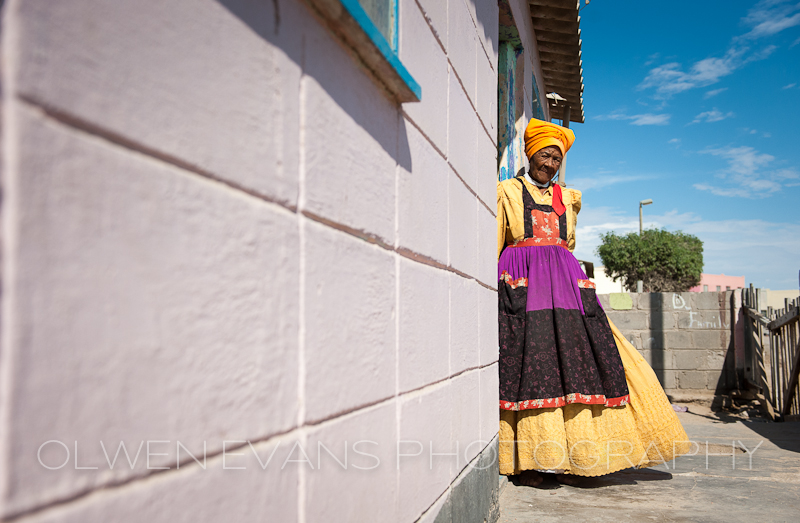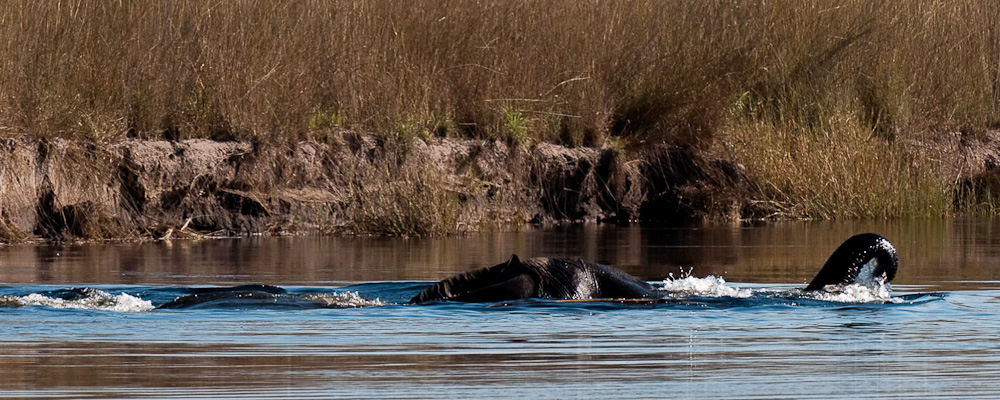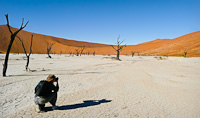50
With only in the region of 120 free roaming desert adapted lion remaining in Namibia, and the increase in incidents of human-animal conflict on the rise, Dr Philip Stander of Desert Lion Conservation, tracks and monitors these unique animals.
Over the past few months conflict between the lions and farmers in the Kunene region of Namibia has reached a peak, with farmers' patience tried to the limit. With the drought lions stray into farming areas and cattle are in the core wildlife areas. Losing 10 cattle means ruin for a small farmer.
Flip Stander and Garth Owen-Smith, of IRDNC, and are attempting to manage the lion emergency; liasing with communities, the Ministry of Environment and Tourism and tourism operators. Benefits from tourism to the area are long term and the predation of their animals immediate.
Money is urgently needed for the erection of kraals and more collars, so that lions can be tracked in real-time and farmers alerted as to their position. Dr Stander relies solely on donations from the public and support from local tourism operators,these can be made by contacting logistics@desertlion.info
Dr Stander has devoted his life's work and resources to researching the desert adapted lions of Namibia, managing human-animal conflict in an environment of sustainable tourism.
Listed below are links to blogs that reference this entry:
desert lion conservation
. TrackBack URL for this entry:
http://olwenevans.com/darkroom/mt/mt-tb.cgi/49



45

As colourful as her door and what a lovely, hospitable lady! Mondesa township, Swakopmund, Namiba.
Traditionally cattle-herding pastoralists, Herero dress was influenced by the Western culture of German missionaries in the late 19th and early 20th centuries.
Traditionally cattle-herding pastoralists, Herero dress was influenced by the Western culture of German missionaries in the late 19th and early 20th centuries.
Listed below are links to blogs that reference this entry:
the face behind the door
. TrackBack URL for this entry:
http://olwenevans.com/darkroom/mt/mt-tb.cgi/44



44
Rieta Pietersen:
Olwen, this is beautifull!!!!
(05.24.12)
Listed below are links to blogs that reference this entry:
colour
. TrackBack URL for this entry:
http://olwenevans.com/darkroom/mt/mt-tb.cgi/43



43
Nestled in the Ongava Reserve, adjacent to Etosha National Park in Namibia, lies a Namibian gem - Ongava Tented Camp (OTC).
Located in a wooded area of Mopane trees, both the dining area and Meru-stlye tents all overlook a waterhole teeming with bird and animal life including the occasional lion and rhino. Relaxing OTC-style includes lounging around a pool, or enjoying dinner with brightly coloured weaver birds constructing their nests overhead while overlooking a waterhole and wallow with their ever-changing visitors.
The appeal of Ongava Tented Camp lies in the fact that one is literally part of the surroundings, the proximity of game, while still maintaining the luxury of excellent accommodation and food. OTC is enhanced by staff and guides with extensive knowledge and experience and its small guest numbers.
Ongava Tented Camp is the place for close-up animal encounters.
Murray Illston:
Brilliant !!
(08.12.12)
Listed below are links to blogs that reference this entry:
Ongava Tented Camp | Namibia
. TrackBack URL for this entry:
http://olwenevans.com/darkroom/mt/mt-tb.cgi/42



42
African safaris are always special, but now and then one finds one that is not only different, but makes a difference. The opportunity to track the critically endangered black rhino with Save the Rhino Trust, Namibia (SRT), is a safari in a category all on its own.
SRT is a NGO founded in response to the large scale poaching of rhino and other species of wildlife. Comprised of a group of local people and conservationists concerned about the destruction of their country's wildlife, they began a collaborative effort to protect the remaining desert-adapted black rhino and encourage its recovery. The Kunene region is home to the largest concentration of black rhino on earth to survive on land that has no formal conservation status. One third of the worlds black rhino are found in Namibia - a testament to the collaboration between the Namibia Ministry of Environment and Tourism, SRT and the local tourism industry.
Based at Wilderness Safaris' luxurious Desert Rhino Camp you get the opportunity to track black rhino on foot and hopefully not get too close. An experience never to be forgotten! While enjoying an early breakfast, the tracking team of Save the Rhino Trust set out to hopefully locate these impressive, solitary animals. Keeping in contact with them by radio, following them by Land Rover takes you through the stark landscape of red rocks, spotted with the toxic Euphorbia damarana which comprises a large part of the black rhino's diet. It can be hot, really hot, and spotting 'wet poop', as out guide Clement put it, a real relief.
From there it's on foot over those same red rocks, as quietly as the terrain allows, stalking these skittish animals, but the thrill of seeing these magnificent, almost prehistoric-looking animals, makes it all worth while. All the excitement is followed by lunch at a nearby spring, during which the trackers complete their logs and talk about the work of the trust.
For those who want a more interactive experience than the standard OESODES (observe-eat-siesta-observe-drink-eat-sleep) safari, this is an experience I highly recommend! I would though, suggest starting your safari in an area of higher wildlife density and visiting Desert Rhino Camp later in your itinerary.
Listed below are links to blogs that reference this entry:
safari with a difference
. TrackBack URL for this entry:
http://olwenevans.com/darkroom/mt/mt-tb.cgi/41







I Love your work and it is sad how all the wild animals will eventually be gone from all the poaching in Africa. I found your web page from a photograph that you did of a disappearing elephant. Amazing picture and it is so true as they are being slaughtered for their tusks. Thanks for your inspiration.
(03.18.19)